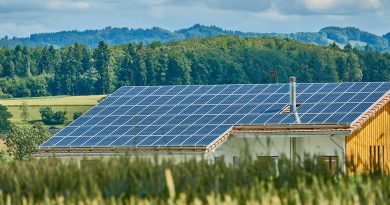How To Negotiate Solar Panels?
Investing in solar panels is a significant decision, and negotiating the installation costs can be a crucial step in ensuring you get the best value for your money. This guide will walk you through the factors influencing solar panel prices, government subsidies and incentives, financing options, and cost trends in the Indian solar market. We’ll also provide tips and strategies for negotiating the best deal on your solar panel installation.
Table of Contents
- 0.1 Factors Affecting Solar Panel Prices
- 0.2 Government Subsidies and Incentives
- 0.3 Financing Options
- 0.4 Cost Trends in the Indian Solar Market
- 0.5 Comparing Solar Energy Costs to Traditional Electricity
- 0.6 Tips for Getting the Best Price
- 0.7 The Impact of Panel Size and Wattage on Cost
- 0.8 Installation Costs and Regional Variations
- 0.9 Understanding Payback Periods and ROI
- 0.10 The Future of Solar Panel Costs in India
- 0.11 Evaluating Solar Panel Manufacturers and Suppliers
- 0.12 The Importance of Proper Installation and Maintenance
- 0.13 Addressing Common Misconceptions About Solar Panel Costs
- 1 Frequently Asked Questions (FAQs)
Factors Affecting Solar Panel Prices
Several factors can influence the cost of solar panels and their installation:
| Factor | Description |
|---|---|
| Panel Type | Monocrystalline, polycrystalline, and thin-film panels have different efficiencies and price points. |
| Wattage | Higher wattage panels generate more power but are usually more expensive. |
| Brand | Well-known brands may charge a premium for their panels due to higher efficiency and reliability. |
| Installation Complexity | Roof type, pitch, and the need for additional equipment like inverters or batteries can increase installation costs. |
| Location | Costs can vary based on local labor rates, permit fees, and accessibility. |
| System Size | Larger systems generally have a lower cost per watt but a higher overall price. |
| Market Demand | Prices fluctuate based on supply and demand in the market. |
Government Subsidies and Incentives
The Indian government offers several subsidies and incentives to encourage the adoption of solar energy:
- Central Financial Assistance (CFA): Up to 40% subsidy on rooftop solar systems up to 3 kW and 20% for systems between 3 kW and 10 kW.
- State-Level Subsidies: Additional subsidies may be available depending on your state. For example, some states offer extra financial incentives or rebates for solar installations.
- Net Metering: Allows you to sell excess energy back to the grid, reducing your overall electricity costs.
- Tax Benefits: Deductions under Section 80-IA of the Income Tax Act for profits derived from power generation projects, including solar.
Financing Options
Several financing options are available to help manage the upfront costs of solar panel installations:
- Solar Loans: Banks and financial institutions offer loans specifically for solar installations, often with favorable interest rates.
- EMI Options: Some solar companies provide installment payment plans to spread the cost over time.
- Solar Leases: Lease the solar system with little to no upfront cost and pay a fixed monthly rate.
- Power Purchase Agreements (PPA): Enter a contract to buy the power generated by the system at a set rate, often lower than your utility rate.
Cost Trends in the Indian Solar Market
The cost of solar panels in India has been declining due to advancements in technology, increased competition, and government initiatives:
- Decreasing Panel Costs: The cost per watt for solar panels has dropped significantly over the past decade.
- Rising Installation Costs: While panel prices have decreased, installation costs have seen a slight increase due to rising labor costs and additional components like smart inverters.
- Improved Efficiency: Newer panels are more efficient, meaning you need fewer panels to generate the same amount of electricity.
Comparing Solar Energy Costs to Traditional Electricity
Solar energy has become increasingly competitive with traditional electricity sources:
- Long-Term Savings: Although the initial investment is higher, solar energy can result in substantial savings over time, especially with rising electricity rates.
- Price Stability: Solar energy prices are stable, unlike traditional electricity, which is subject to market fluctuations and fuel costs.
Tips for Getting the Best Price
Negotiating the best price for your solar panel installation requires a strategic approach:
- Get Multiple Quotes: Obtain quotes from several installers to compare prices and services.
- Leverage Subsidies: Ensure you take full advantage of available government subsidies and incentives.
- Negotiate Terms: Discuss payment terms, warranties, and maintenance services to get the most value.
- Consider Bulk Purchases: If you’re part of a community or housing society, consider a bulk purchase to negotiate better rates.
- Check for Hidden Costs: Be aware of additional costs like permit fees, grid connection charges, or maintenance services.
The Impact of Panel Size and Wattage on Cost
Larger and higher wattage panels typically cost more, but they can reduce the overall number of panels needed, potentially lowering installation costs:
- Higher Wattage: Fewer panels required, reducing installation complexity and costs.
- Larger Panels: May require fewer mounts and less wiring, but they can be more challenging to install on smaller or irregularly shaped roofs.
Installation Costs and Regional Variations
Installation costs can vary significantly depending on your location:
- Urban vs. Rural Areas: Labor costs are generally higher in urban areas, while rural installations might face logistical challenges.
- Regional Incentives: Some regions offer additional incentives or rebates that can lower installation costs.
- Climate Considerations: Areas with extreme weather conditions might require more robust mounting systems, increasing costs.
Understanding Payback Periods and ROI
The payback period is the time it takes for the savings from your solar system to cover the initial investment:
- Calculation: Payback period = Total system cost / Annual savings from reduced electricity bills.
- ROI: A shorter payback period means a higher return on investment. Most residential solar systems in India have a payback period of 4-7 years.
The Future of Solar Panel Costs in India
The future looks promising for solar energy in India:
- Continued Price Declines: As technology advances and economies of scale are achieved, solar panel costs are expected to continue to decline.
- Increased Efficiency: Ongoing research is focused on improving the efficiency of solar panels, which will further reduce costs by requiring fewer panels for the same energy output.
- Government Support: Continued government support is likely, with policies aimed at achieving ambitious solar energy targets.
Evaluating Solar Panel Manufacturers and Suppliers
Choosing the right manufacturer and supplier is crucial for getting a good deal:
- Reputation: Look for manufacturers with a strong reputation for quality and reliability.
- Warranty: Ensure the panels come with a solid warranty that covers both performance and product defects.
- After-Sales Support: Good after-sales support can save you money in the long run by addressing any issues that arise.
The Importance of Proper Installation and Maintenance
Proper installation and maintenance are key to ensuring the longevity and efficiency of your solar system:
- Certified Installers: Always use certified installers who follow best practices and adhere to local regulations.
- Regular Maintenance: Regular cleaning and inspection can prevent minor issues from becoming major problems, preserving the efficiency of your system.
Addressing Common Misconceptions About Solar Panel Costs
There are several misconceptions about the cost of solar panels:
- Myth: Solar panels are too expensive. Reality: While the upfront cost can be high, government subsidies, financing options, and long-term savings make solar an affordable option.
- Myth: Solar panels don’t work well in cloudy or rainy regions. Reality: Solar panels can still generate electricity on cloudy days, and with proper design, they can be effective even in less sunny regions.
Frequently Asked Questions (FAQs)
Q1: How much does a typical solar panel installation cost in India? A1: The cost can vary depending on the system size, panel type, and location, but a residential system typically ranges from INR 40,000 to INR 1,00,000 per kW.
Q2: Can I negotiate the price of a solar panel installation? A2: Yes, it’s common to negotiate with installers. Getting multiple quotes and leveraging government incentives can help you get a better deal.
Q3: What factors influence the cost of solar panels the most? A3: The type of panel, its wattage, brand, and installation complexities are the main factors influencing cost.
Q4: Are there any subsidies available for solar panel installation in India? A4: Yes, the Indian government offers central financial assistance and various state-level subsidies for solar installations.
Q5: How do I choose the best solar panel manufacturer? A5: Look for manufacturers with a strong reputation, solid warranties, and good after-sales support.
Q6: What financing options are available for solar installations? A6: Options include solar loans, EMI plans, solar leases, and power purchase agreements (PPA).
Q7: How can I calculate the payback period for my solar system? A7: Divide the total system cost by the annual savings on your electricity bill to estimate the payback period.
Q8: Will solar panel costs continue to decrease in the future? A8: Yes, ongoing technological advancements and economies of scale are expected to further reduce solar panel costs.
Negotiating the cost of solar panel installation requires a good understanding of the factors influencing pricing, available incentives, and financing options. By following the tips and strategies outlined in this guide, you can ensure you get the best deal on your solar investment, leading to long-term savings and a reduced environmental footprint.


